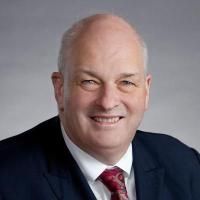Safety, efficacy, and dosing of recombinant human bone morphogenetic protein-2 for posterior cervical and cervicothoracic instrumented fusion with a minimum 2-year follow-up.
Date
2011-07
Journal Title
Journal ISSN
Volume Title
Repository Usage Stats
views
downloads
Citation Stats
Abstract
Background
Considerable attention has focused on concerns of increased complications with recombinant human bone morphogenetic protein-2 (rhBMP-2) use for anterior cervical fusion, but few reports have assessed its use for posterior cervical fusions.Objective
To assess the safety, efficacy, and dosing of rhBMP-2 as an adjunct for instrumented posterior cervical arthrodesis.Methods
All patients treated by the senior author with posterior cervical or cervicothoracic instrumented fusion using rhBMP-2 from 2003 to 2008 with a minimum of 2 years of follow-up were included. Diagnosis, levels fused, rhBMP-2 dose, complications, and fusion were assessed.Results
Fifty-three patients with a mean age of 55.7 years (range, 2-89 years) and an average follow-up of 40 months (range, 25-80 months) met inclusion criteria. Surgical indications included basilar invagination (n = 6), fracture (n = 6), atlantoaxial instability (n = 16), kyphosis/kyphoscoliosis (n = 22), osteomyelitis (n = 1), spondylolisthesis (n = 1), and cyst (n = 1). Fifteen patients had confirmed rheumatoid disease. The average rhBMP-2 dose was 1.8 mg per level, with a total of 282 levels treated (average, 5.3 levels; SD, 2.8 levels). Among 53 patients, only 2 complications (3.8%) were identified: a superficial wound infection and an adjacent-level degeneration. No cases of dysphagia or neck swelling requiring treatment were identified. At the last follow-up, all patients had achieved fusion.Conclusion
Despite many of the patients in the present series having complex pathology and/or rheumatoid arthritis, a 100% fusion rate was achieved. Collectively, these data suggest that use of rhBMP-2 as an adjunct for posterior cervical fusion is safe and effective at an average dose of 1.8 mg per level.Type
Department
Description
Provenance
Subjects
Citation
Permalink
Published Version (Please cite this version)
Publication Info
Hamilton, D Kojo, Justin S Smith, Davis L Reames, Brian J Williams, Daniel R Chernavvsky and Christopher I Shaffrey (2011). Safety, efficacy, and dosing of recombinant human bone morphogenetic protein-2 for posterior cervical and cervicothoracic instrumented fusion with a minimum 2-year follow-up. Neurosurgery, 69(1). pp. 103–111. 10.1227/neu.0b013e318214a9b1 Retrieved from https://hdl.handle.net/10161/29236.
This is constructed from limited available data and may be imprecise. To cite this article, please review & use the official citation provided by the journal.
Collections
Scholars@Duke

Christopher Ignatius Shaffrey
I have more than 25 years of experience treating patients of all ages with spinal disorders. I have had an interest in the management of spinal disorders since starting my medical education. I performed residencies in both orthopaedic surgery and neurosurgery to gain a comprehensive understanding of the entire range of spinal disorders. My goal has been to find innovative ways to manage the range of spinal conditions, straightforward to complex. I have a focus on managing patients with complex spinal disorders. My patient evaluation and management philosophy is to provide engaged, compassionate care that focuses on providing the simplest and least aggressive treatment option for a particular condition. In many cases, non-operative treatment options exist to improve a patient’s symptoms. I have been actively engaged in clinical research to find the best ways to manage spinal disorders in order to achieve better results with fewer complications.
Unless otherwise indicated, scholarly articles published by Duke faculty members are made available here with a CC-BY-NC (Creative Commons Attribution Non-Commercial) license, as enabled by the Duke Open Access Policy. If you wish to use the materials in ways not already permitted under CC-BY-NC, please consult the copyright owner. Other materials are made available here through the author’s grant of a non-exclusive license to make their work openly accessible.
